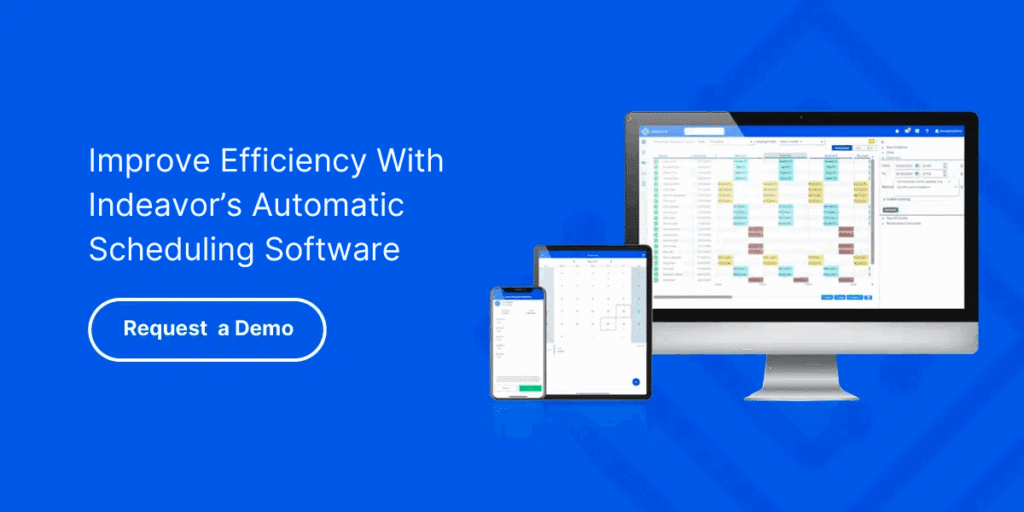Industrial automation solutions have grown dramatically in recent years. From robotic arms on assembly lines to AI-driven process optimization, these systems promise higher output, reduced errors, and enhanced safety.
Yet, despite this technological marvel, there’s a critical juncture where industrial automation solutions end and human labor becomes essential. Indeavor exists precisely at this intersection, ensuring that workforce strategy aligns with automation to maintain seamless operations, compliance, and efficiency.
The Reach of Industrial Automation
Industrial automation solutions are designed to optimize repetitive tasks—regulating machine speeds, handling materials, and collecting data from IoT sensors. By automating manufacturing routines, they reduce human error and increase throughput. Types of industrial automation systems include programmable logic controllers (PLCs), distributed control systems (DCS), and SCADA platforms, each automating different process layers.
Yet, these systems alone cannot drive operations to completion. They execute defined processes, not adaptive problem-solving or strategic staffing decisions. That’s where human labor steps in.
Why Human Labor Still Matters
Real-Time Adaptability
When machine alarms trigger, supply chain disruptions occur, or last-minute orders arrive, only skilled operators and supervisors can interpret context and respond dynamically. Robots lack the situational judgment and flexibility that experienced humans provide.
This adaptability is essential when production plans shift. Human flexibility fills in the gaps where industrial automation solutions can’t pivot fast enough.
Maintenance, Calibration & Quality Control
Even the most advanced industrial automation needs human oversight. Technicians diagnose faults, perform calibration, manage preventive maintenance, validate product quality, and generally services industrial automation. These nuanced roles require technical acumen and decision-making.
Quality assurance is another area where people are irreplaceable. While automation can detect defects, humans are still needed to validate results and resolve underlying issues.
Compliance & Safety
Shift patterns, fatigue regulations, certifications, and union agreements impose labor constraints that automation cannot manage alone. Indeavor’s workforce intelligence ensures that when industrial automation solutions schedule uptime, human scheduling remains compliant and safe.
This safeguards both compliance and worker safety. Automation uptime is only useful when human labor is legally and ethically aligned.
Complex & Cognitive Work
Roles such as engineers, quality auditors, and logistics supervisors involve judgment, collaboration, and complex communications—still beyond what automation can handle.
Without the right human resources, the promise of automation remains underserved. Gaps between machine readiness and workforce availability often lead to idle equipment, backlogs, or compliance risks.
Bridging Automation with Human Intelligence
Industrial automation and human labor must work in tandem. Indeavor builds a bridge between those realms, transforming automation data into intelligent workforce planning.
Indeavor uses real-time production data to forecast labor needs by shift. When a system predicts increased output, staffing scales up. If machines go offline, non-critical labor shifts down. This avoids overstaffing and keeps human resources aligned with actual industrial automation workloads.
Many industries have fatigue limits, certified skills mandates, union quotas, or equity policies. Indeavor embeds these rules into workforce systems. That ensures workers are assigned legally, fairly, and efficiently every single time.
By analyzing metrics like overtime trends and skill utilization, Indeavor surfaces hidden inefficiencies. For instance, in manufacturing, employees average 3.6 overtime hours per week. Indeavor uses such insights to recommend smarter staffing strategies, in order to reduce overtime, balance temporary and full‑time roles, and boost morale.
How Indeavor Extends Industrial Automation Solutions
To unlock the full potential of industrial automation solutions, organizations must move beyond isolated machine data and incorporate strategic labor alignment. Indeavor helps manufacturers and service providers bridge this critical gap by offering an integrated platform that connects workforce operations to automation systems. This ensures that every scheduled shift, role, and task complements, rather than conflicts with, automated processes.
- Data Integration: Indeavor ingests machine throughput, maintenance schedules, and downtime analytics. It then overlays workforce analytics, such as availability, skills, certifications, and fatigue. This convergence aligns human and machine productivity.
- Schedule Forecasting: With labor forecasting and schedule forecasting tools, shifts are built not in isolation but around automation outputs, both planned and unplanned.
- Service-Focused Approach: Indeavor’s industrial automation support goes beyond consulting. They deploy workforce systems tailored to industrial environments, from implementation to training. These services ensure your workforce is prepared for both scheduled operations and last-minute workflow shifts.
- Continuous Improvement: Using workforce analytics and operational insights, Indeavor drives iterative improvements: cross-training programs, overtime reduction, and compliance score enhancements—all while maximizing the return on your automation investment.
By extending automation into workforce management, Indeavor delivers continuity between machine efficiency and human reliability. The result is a smarter, more agile operation that adapts to daily fluctuations while staying grounded in long-term strategic goals.

From Automation to Operational Excellence
Industrial automation solutions are essential, but incomplete, pieces of modern manufacturing. They deliver efficiency, consistency, and scale. Yet, when those systems reach their limits, human labor must seamlessly pick up the slack. Indeavor helps organizations identify the boundary where automation ends and human intelligence begins and ensures productivity flows uninterrupted across that boundary.
Automation is not the finish line. It’s the starting point of a mature operational strategy. The future belongs to companies that don’t just implement industrial automation solutions, but integrate them with a responsive, compliant, and intelligent human workforce. Indeavor is that integration engine, empowering machines and people to work together, efficiently and safely.
To discover how Indeavor extends your industrial automation solutions into a full-cycle operational advantage, book a demo or contact our team today.
About the Author
Claire Pieper is the Digital Marketing Specialist for Indeavor. In her role, she specializes in crafting strategic and engaging content, ensuring that customers are well-informed. Claire is dedicated to enhancing the customer experience and optimizing the user journey through Indeavor’s solutions. To learn more or get in touch, connect with Claire on LinkedIn.



